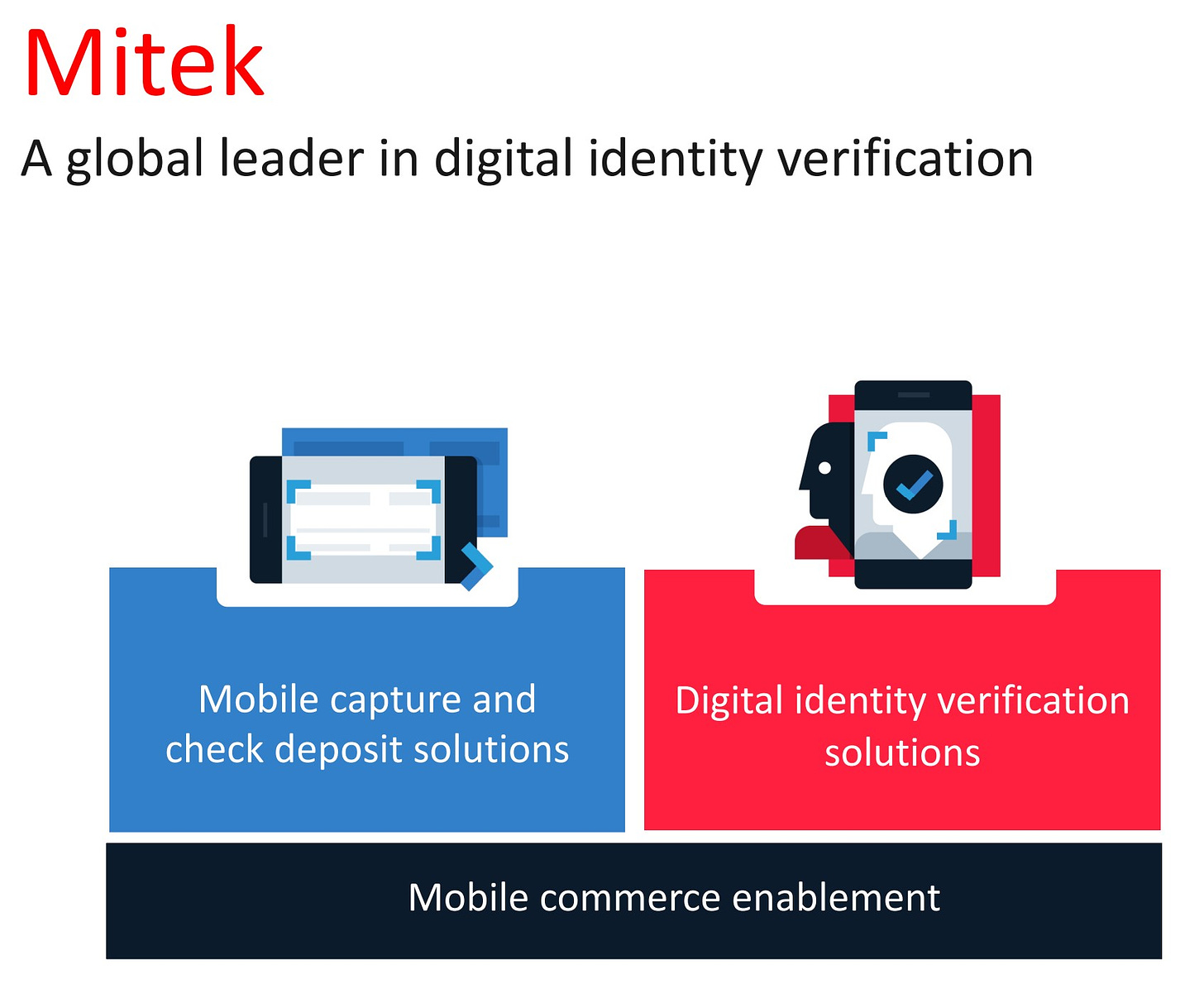Mitek Systems: Monopoly Business Under $10 A Share
Legal and regulatory concerns are weighing on MITK stock. Despite real challenges, market pessimism looks overdone.
📍 TL;DR
Fundamentally speaking, MITK looks like one of the market’s cheapest stocks.
But the market is discounting risks related to delayed financials, and, more importantly, a series of patent litigation cases.
The risks are real, but perhaps overblown. Valuation looks cheap enough for investors to take a swing.
Fundamentally speaking, digital identity verification developer Mitek Systems MITK 0.00%↑ is too cheap. The company has grown at an impressive clip for years and still has opportunity ahead. Any reasonable valuation method, based on what Mitek has achieved to this point and what’s likely to achieve going forward, would suggest that MITK is a steal just below $10.
The catch is that MITK is not just a fundamental story. Rather, there are two significant concerns not captured in the company’s financial results. One of those concerns, perhaps ironically, is that Mitek literally hasn’t delivered recent financial results; audited results for fiscal 2022 (ending September) remain incomplete, and Mitek hasn’t delivered unaudited results for the fiscal fourth quarter. The more important issue is legal uncertainty related to Mitek’s core offering.
Both risks are real, and worth considering. MITK has short interest of ~6.5% of the float, a not-insignificant amount for a stock with a ~$450 million market cap. It’s likely those risks explain the soft headline valuation and recent underperformance. Shares are up only 2% year-to-date despite a broad rally in small-caps (particularly small-tech). Since the end of 2021, MITK is -44%, while the S&P 500 is down 14%, even though value has outperformed growth during that stretch.
In other words, Mitek Systems stock is acting like it’s a value trap, not a value play. It’s acting like the market is trying to tell us something. The question is if the market is right. We believe, at this valuation, it’s worth betting that it isn’t.
source: Mitek investor presentation
Introducing Mitek Systems
Mitek (pronounced ‘my-tech’) develops technology, primarily for financial institutions, that centers on identity verification. The core revenue stream comes from solutions for mobile depositing of checks, which in FY21 accounted for 63% of revenue.



